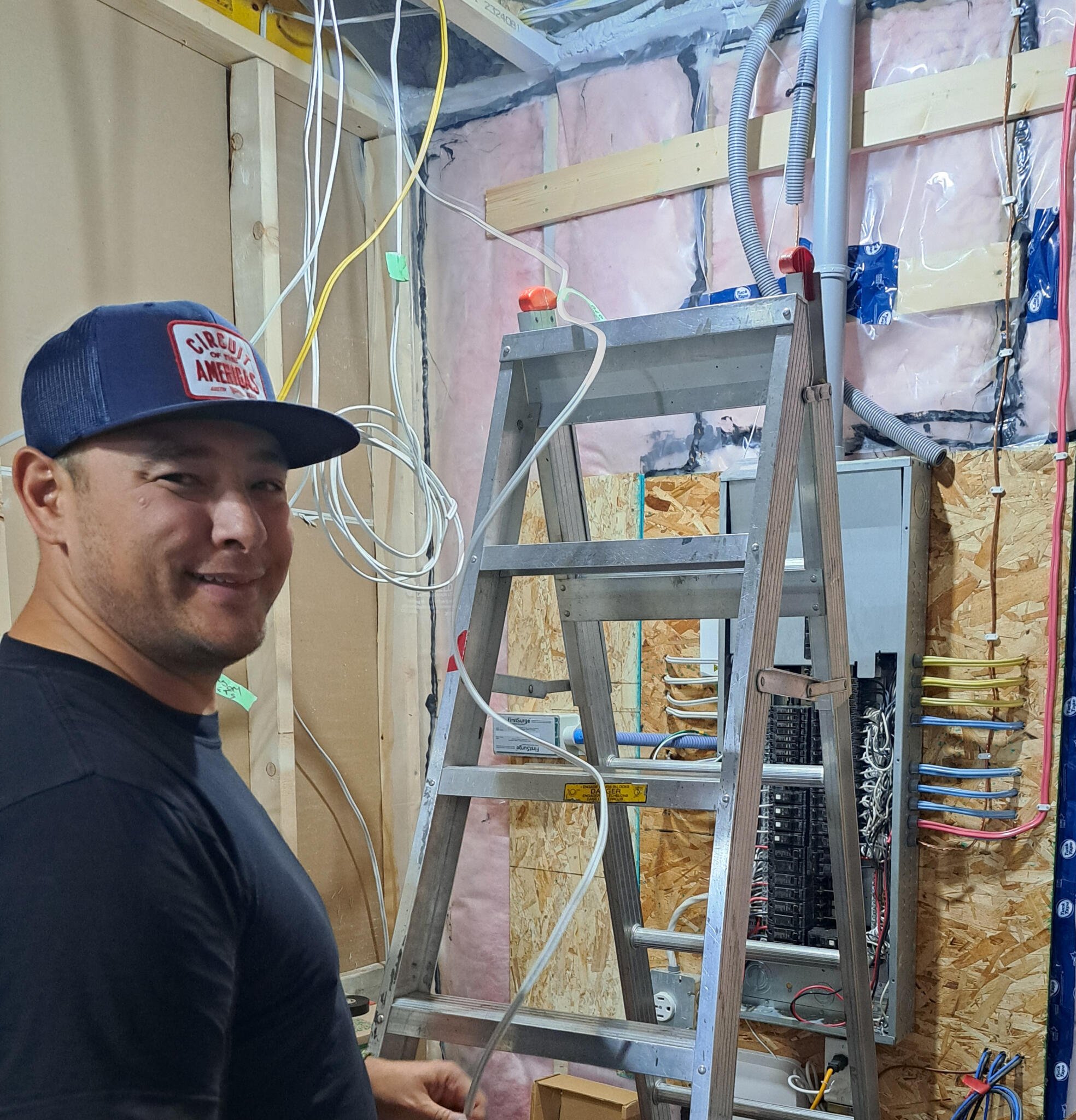@erik_squires We just moved into a new home and I'm currently developing the basement around a dedicated listening room. I found it really helps to have a son-in-law who is a master Electrician. I ran all the wiring but I like to leave the live hook up at the panel to him. If you look closely, you will see the whole house surge protector installed. This idea came from reading one of your earlier posts on this subject. Required? Maybe not, but for a few hundred dollars, the peace of mind is well worth it. IMHO. Thanks for your informative postings and keep up the good work. Cheers.
The last 20 years of Home Power Have Been Amazing
In the late 1990s I installed my first electric panels. Mostly for the sake of running a safe woodworking workshop but also to enable the multiple window units and my partner and my offices, plus the TV and stereo, of course.
At that time whole house surge protectors were available but not required. Being an IT guy in a storm prone area of course I went for it. Otherwise however breakers were rather similar to those from the original mid 1960s versions. I mean, I’m sure there were improvements in panel technology and how breakers were manufactured but for the home there were really only two aspects you needed to care about:
- Current capacity
- Poles (1 or 2)
And for the home owner that’s were things stood for almost 40 years. In the last 20 years though much has changed. Arc fault (AFCI or CAFCI) first required in 2002 for bedrooms. Now (since 2017) they are required practically everywhere in a home. Whole house SPDs (surge protectors) are required from 2020.
Most recently, the 2023 NEC greatly expanded the use of Ground Fault (GFCI) protection. GFCI’s which were limited to kitchen and bath outlets are now required for your washer and dryer, microwave, range, dishwasher and (in my case) garbage disposal. Take a look at any modern panel. You’ll see 4 different types of breakers:
- Old fashioned
- GFCI (white test button)
- CAFCI (dark blue test button)
- Combined GFCI + CAFCI (pale blue test button)
And outlets? Have you noticed weather resistant (WR, 2008) or tamper resistant (TR, 2008) requirements? In addition to GFCI requirements. Sheesh. It’s a marvel any electrician can keep them all straight, let alone a home owner.
Of all these improvements though the only one I'd suggest you rush out and get is the whole house surge suppressor unless your breaker panel is running 40 years old in which case a replacement may be a good idea soon.
- ...
- 56 posts total
Hey @bigtwin - As of 2020, whole house surge protection is required by the NEC, but regional codes may say otherwise. I really did it wrong. I spent 3 days installing a garbage disposal thinking the entire time I should have raised children to do this for me. Nice to have the family support like that! I'm afraid that petty projects like mine don't get electrician's or plumber's attention around these parts for love or money. If they were my kids though I could apply guilt instead. |
@erik_squires Up here in Canada, the concept of surge protectors flies under the radar. Nothing in the building code. We need Arc Fault breakers on any lines that have outlets. Lines with only lights and switches still use regular breakers. I ran a number of dedicated lines into what will be my listening room. Double 30 amps and 8 gauge for my 240v step down transformer and 20 amp 10 gauge for my front end equipment. I plan a full words and picture post later this year when the project is completed. It's been a lot of fun and a lot of work. |
@bigtwin Oy Vey, is that an Aluminum ladder in front of the live panel? OSHA 1915.72. Not a good look . |
- 56 posts total


